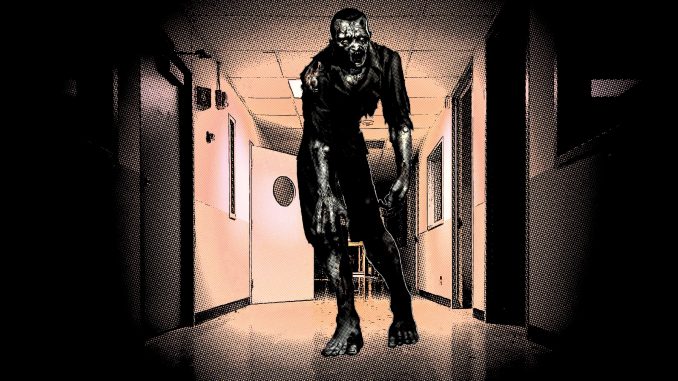
In the beginning, there was the void.
The void was black nothingness. Then, there was the pixel. It was white (or orange, or green) and there could be more than one of them (but all the same colour). When people decided to make games in the void (as they do), the void was interpreted as outer space. And so there were space ships and asteroids and aliens. So many aliens. The void was no longer empty. But the aliens would not rule over it for long.
Pixels became smaller, and there was more of them. They could be different colours too! While space games weren’t going anywhere, they started to have to share the void with other types of games: maze games, platform games, racing games… but these games were still heavily reliant on their mechanics and light on style.
As video graphics became more and more sophisticated, so too did the content of those games and the presentation of that content. This gave them more of the flexibility previously only afforded to television and cinema, and opened the door to other genres that relied more heavily on their aesthetic – in particular, horror.
Working in tandem with spooky soundtracks and grotesque storylines, games that employed the horror milieu were able to tap into primal fears that lurked within their players, providing some of the best early videogaming experiences during a time when the technology behind them was still too crude to provide a truly immersive experience to genres such as racing or action.
Fear is the ultimate human driver, and by exploiting our fears – in particular the fear of death – horror games have the power to more easily disarm our disbelief and make us more invested in the fate of the game’s protagonist. This also means we will put more money in the machine, or buy the software in the store, which makes the genre attractive to those hoping to make a fast dollar.
But when the aesthetic is everything, it can also be tricky to pull off properly. By no means was every horror-themed game a success, although those failures can almost universally be laid at the feet of lazy developers who failed to realise the importance of the aesthetic. Just putting a hockey mask on your character and a chainsaw in his hands doesn’t make your game good, if the rest of it is uninspired. It may still be horrifying to those who make the mistake of buying it, but not in the way you intended.
In this issue, we’re going to take walk through our little hospital of technological horrors and peer through those little windows in the reinforced doors at a number of terrifying ‘subjects’, including several horror-themed videogames, some of which are scary-good, and some of which are just scary.
However, games are not the only frights to be found in our hospital.
Previously we worked to dispel the notion that technology would eventually doom us all to a life of robotic servitude, robbing us of our creativity and reducing us to fleshy drones doing the bidding of a gigantic electronic machine, but given the theme of this issue, we will choose instead here to amplify those fears, looking back at techno-horror movies and the dystopian futures they predicted.
If these movies are to be believed, maybe the robots _are_ coming to kill you, after all! Or at least enslave you.
But not all technological horror is found in fantasy – there are some real-world terrors, such as the microwave (scourge of gerbils), the electric chair and electroshock therapy, the latter of which is a common treatment for recalcitrant inhabitants of our hospital of horror – whether they need it or not.
Would you like to give it a try?
You might prefer it to spending time with the Virtual Boy or Windows Millenium, both of which have a place in this issue, for being terrifyingly terrible. If you’re not careful, you could be forced to play Atari 2600 Pac-Man!
Some of our inmates also include the unloved and unwanted – 8-bit computers that never found a home, and went insane!
They while away their time with failed consoles such as the Atari 5200 and the Commodore 64GS (the latter just a poor helpless computer who had its keyboard surgically removed!), and mourn their pitiful existences in the company of the Capactitance Electronic Disc – a video ‘record’ that went head-to-head with the VCR and lost, horribly.
There’s zombie turtles, a brand-new ZX Spectrum action-puzzler featuring mummies, a computerised trivia board game that takes place inside a haunted house and more, so wander our halls and see what lurks within. You may never leave!

Be the first to comment